A lawn aerator sits alongside your lawn mower as a great garden tool for anyone who wants to show their patch of grass some love. Aerators basically help your lawn to breathe by loosening the density of the turf to allow air and water to get to the grass's roots and improve drainage. They also prepare your lawn for a sprinkle of fertiliser or grass seed. In the long term, this should result in you being able to enjoy a healthier, lusher, greener garden.
With many resembling medieval torture weapons, aerators come in different designs, but all offer the same founding principle - using metal spikes to poke small holes in your lawn. Some aerators offer a 'core-ing' functionality where they remove small plugs of turf to really allow your grass's roots to spread and flourish. This is only recommended for grassy areas that are particularly compacted or compressed.
Best lawn aerators at a glance:
Aerators are particularly useful when you want to give a tired lawn a new lease of life. However, even well-maintained lawns can benefit from an aeration session a couple of times a year - traditionally at the start of spring and at the end of the summer season when the ground typically has more moisture content and is easier to penetrate. We have an interesting selection of seven different types of aerators - have a read to see which one would best suit your garden's needs.
Best lawn aerators for your garden
Best rotary aerator
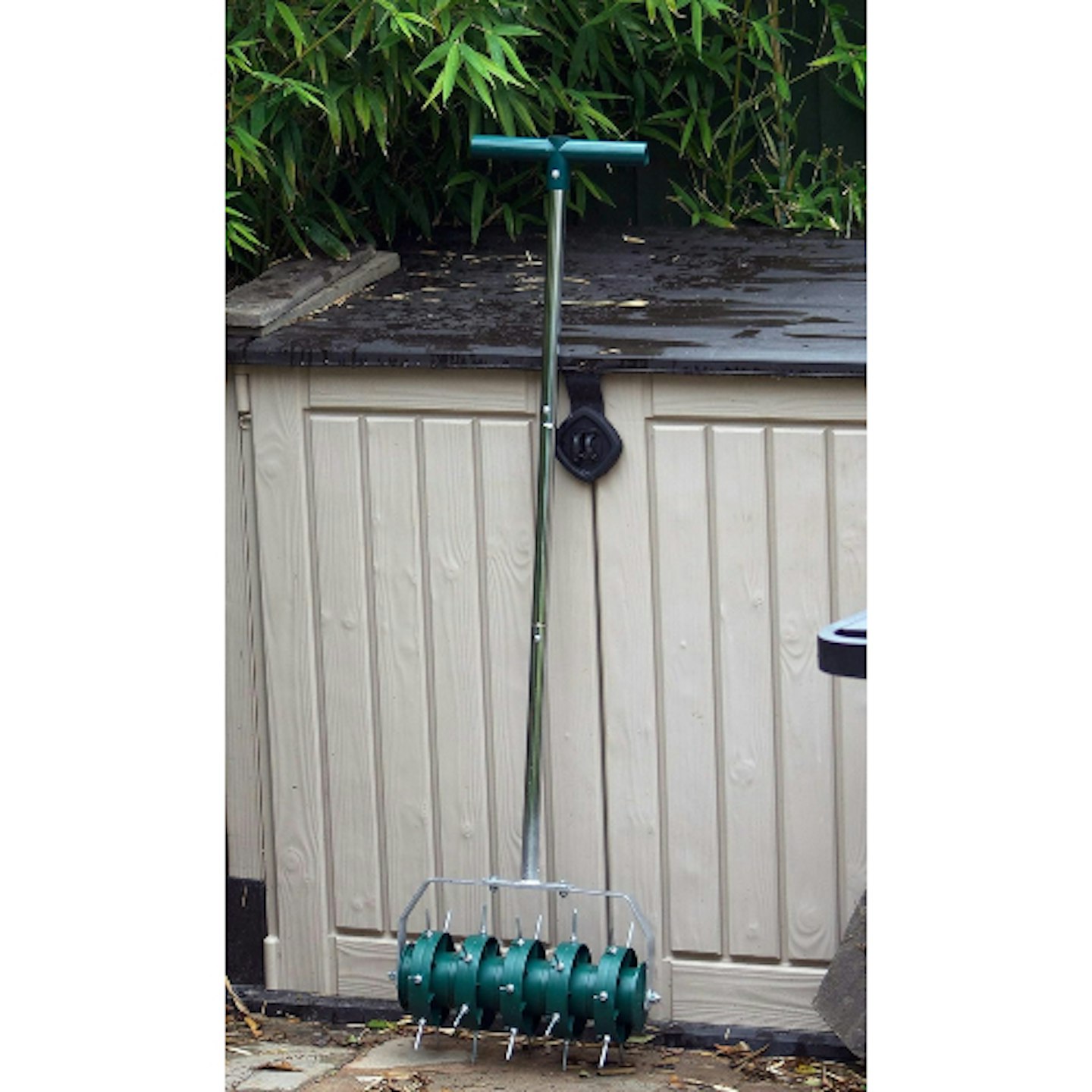 Greenkey/Amazon
Greenkey/AmazonThis classic rolling lawn aerator from Greenkey is a popular option and Amazon's Choice for the category. It currently enjoys a four-star rating for its ease of use and the effective results it produces.
You simply apply some pressure and push this rotary option around your lawn to get that aeration you're looking for. For this reason, this option is best for small- to medium-sized gardens - anyone with a large lawn could end up pushing and walking for miles. Do note, reviewers suggest it works best on damp or wet ground.
Making for efficient operation, this has a generous 30cm roller head that's equipped with thirty 4.5cm metal spikes. The spikes are secured with nylon locking nuts to ensure they don't work loose and get stuck in your lawn.
Pros
- Wide 30cm roller head to cover more ground in less time
- T-shaped handle for comfortable pushing action
Cons
- Assembly is required which some say can be a bit tricky
Best aerator shoes
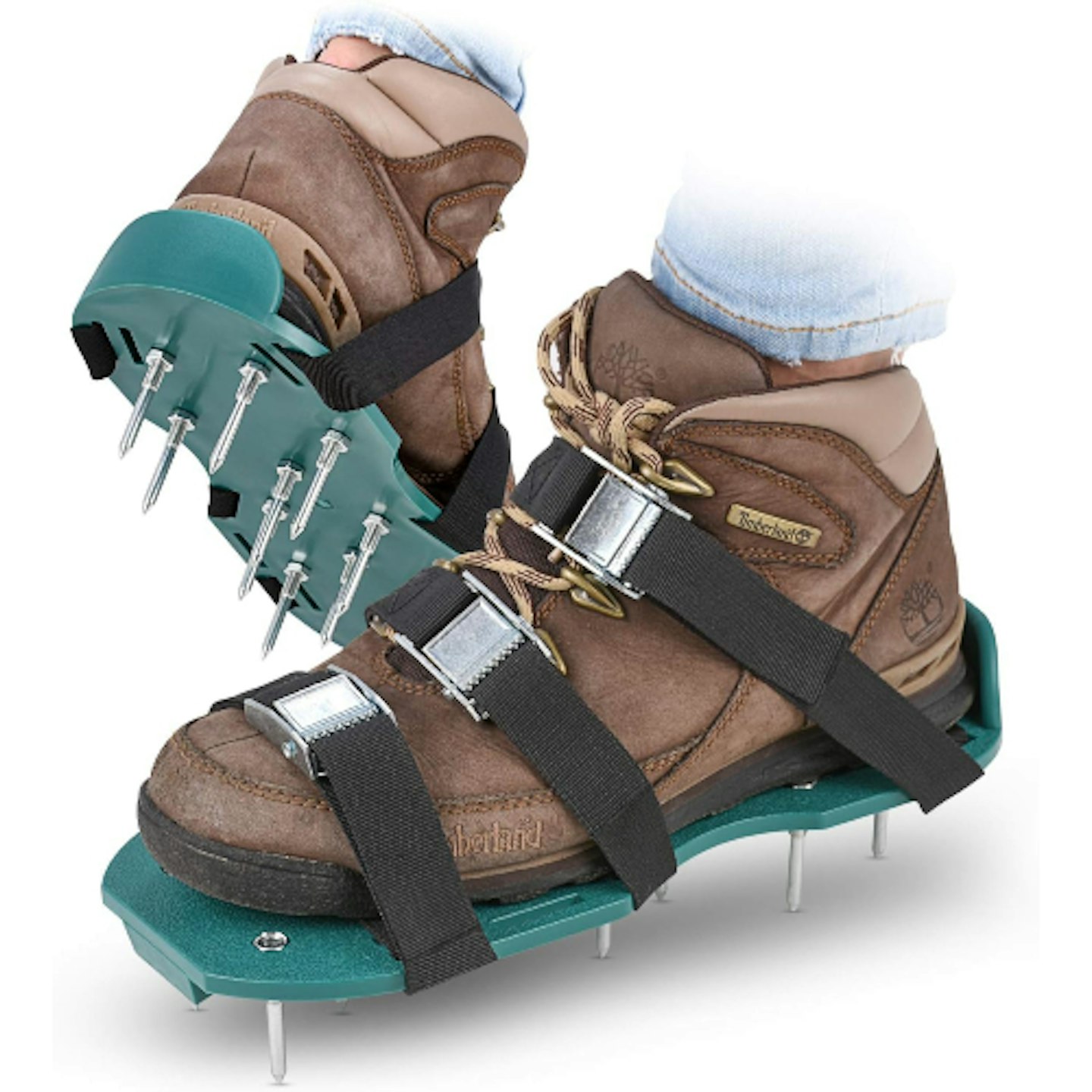 Abco Tech/Amazon
Abco Tech/AmazonIf you can't, or don't want to, push an aerator around your lawn, aerator shoes are an attractive alternative. These Abco Tech 'shoes' are comprised of a polymeric hard plastic sole, 13 heavy-duty, 4.8cm metal spikes on each, and three adjustable straps with strong buckles, designed to be anti-corrosive and durable.
While these shoes don't offer the precision coverage a roller-style aerator can achieve, what they are great for is wearing while you're mowing the lawn - multi-tasking doing two vital garden jobs in one go. You could also pop these on as you're simply pottering around your lawn.
These do require assembling by adding the spikes into the sole, but an instruction manual and the correctly sized spanner are included. Abco Tech promises assembly is a five-minute job.
Pros
- Three heavy-duty buckles to keep the spiked soles firmly in place
- A non-push solution that you can strap on anytime that suits you
Cons
- "One size fits most" sizing might not work for everyone
Best electric aerator
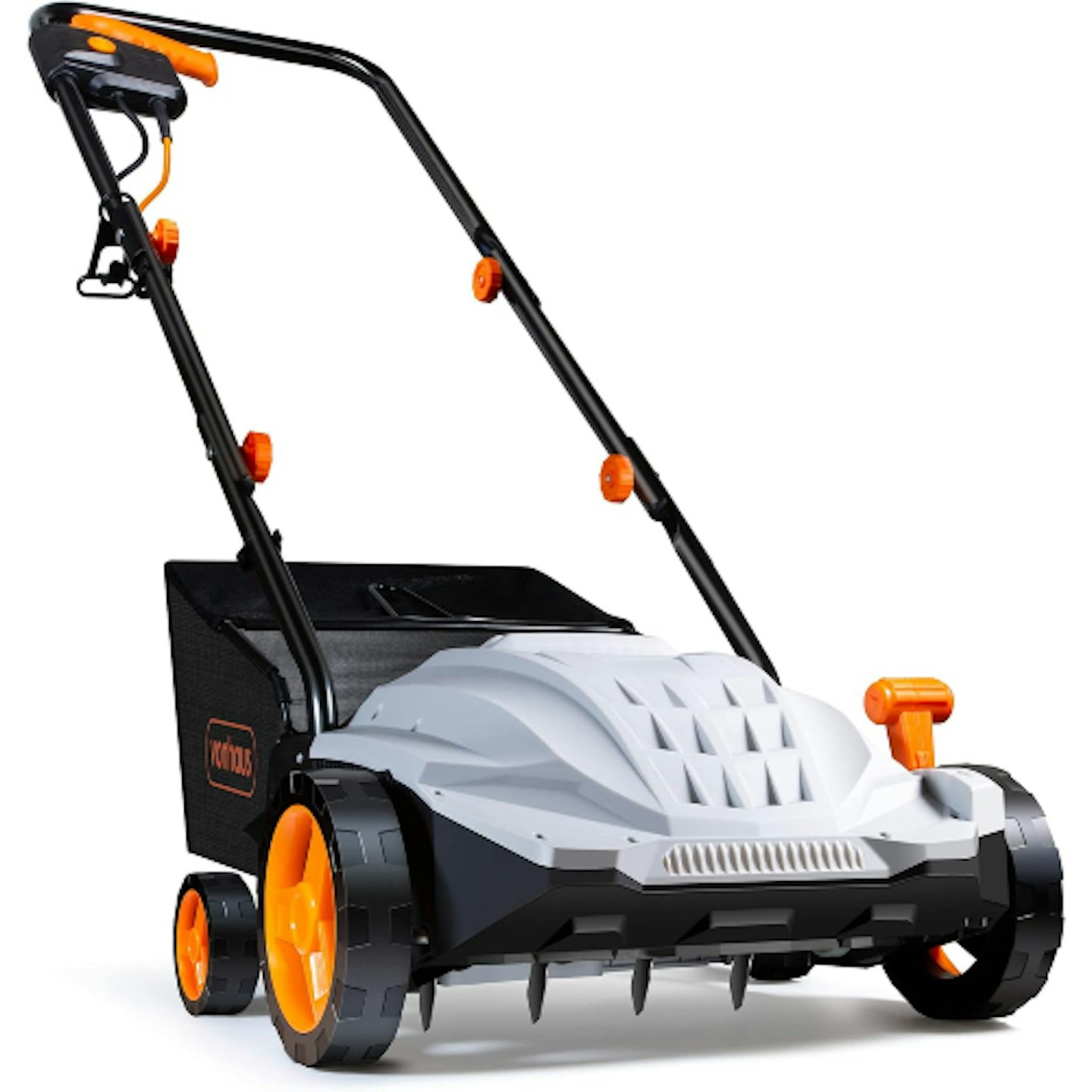 VonHaus/Amazon
VonHaus/AmazonIf you have a large lawn, or are just super-swank, you may want to consider investing in an electric aerator. This corded option from VonHaus will earn its place in your shed or garage thanks to its multi-tasking abilities - as well as aerate, this can rake and scarify your lawn for a full beauty treatment.
This comes with two interchangeable rotary roller blades that fit into the base of the machine to offer two different functionalities. Once fitted you simply squeeze the power trigger and push just like you would a mower. If you're going down the scarification route, a 30-litre collection bag will catch the thatch and moss that's dug up.
This boasts a 32cm working width and gives you the flexibility of four cutting depths, changed by a simple safety trigger, so you can choose the best working height depending on your lawn's needs. There's a height-adjustable handle and a 10-metre power cable.
Pros
- Less hard work than pushing an aerator into the ground
- Scarifying and raking functionality as well as the ability to aerate
Cons
- Needs to be used within reach of a power source
Best spike aerator
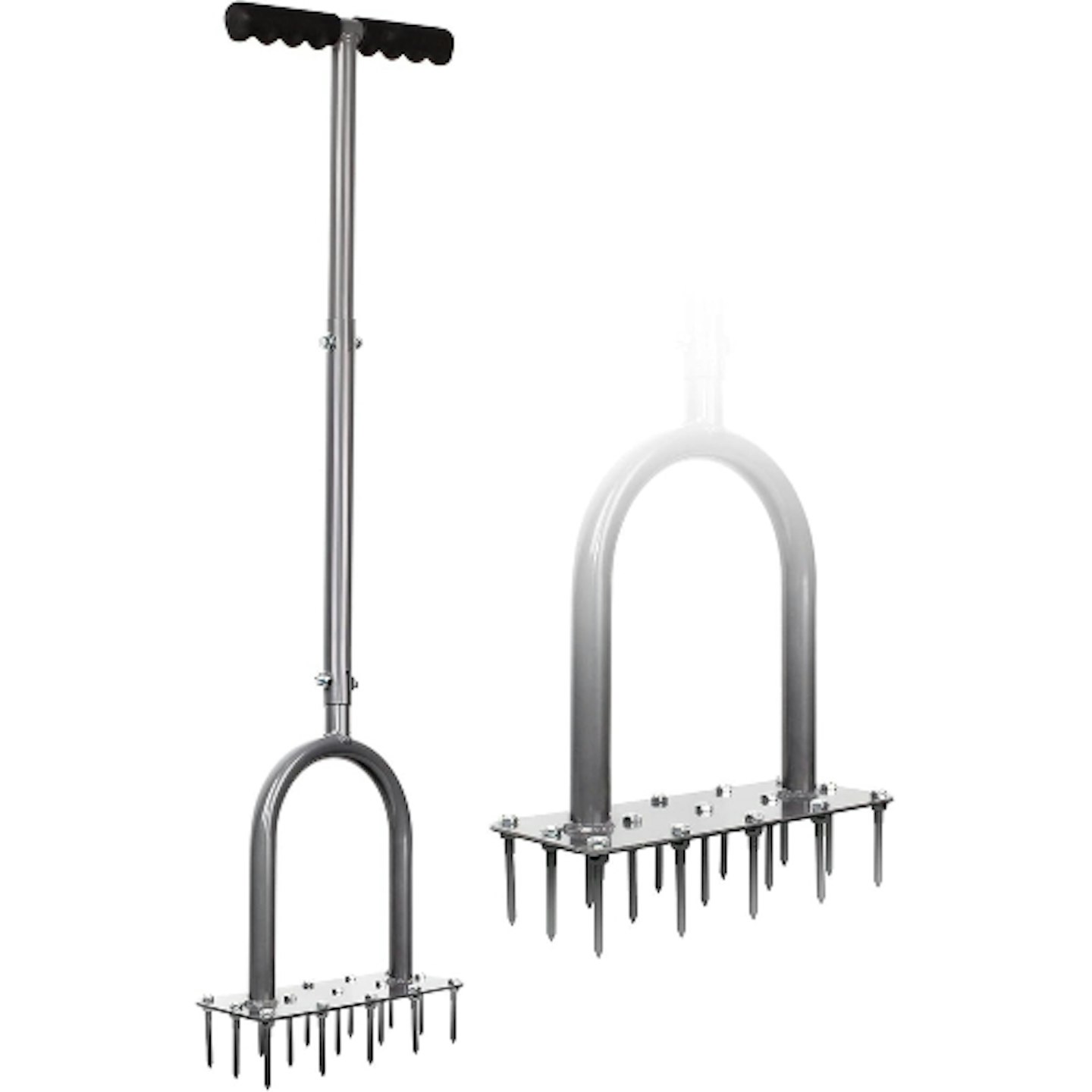 Walensee/Amazon
Walensee/AmazonA spike-style aerator is a traditional choice with a simple concept - you just use your foot to press down on the footplate and propel this into the ground to create the aeration holes.
This has an 88cm handle while the aerator's spiked heads measures in at just over 23cm wide. This is equipped with 15 sharp spikes that can penetrate your lawn to a depth of just over 7cm. The T-shaped handlebar has specially shaped, ergonomic hand grips and is cushioned for a comfortable grip, although the beauty of this design is that most of the force you exert comes from your foot pushing on the footplate.
While using this to aerate an entire lawn would be a time-consuming job, this shines when it comes to dealing with difficult areas of lawn - where the drainage is poor, or if you're just working on improving patches with grass seed and fertiliser.
Pros
- Cushioned handle with ergonomic hand holds for a steady grip
- A great option to tackle areas of lawn with poor drainage
Cons
- This only aerates one 23cm wide patch of lawn at a time
Best hollow tine aerator
 Eeieer/Amazon
Eeieer/AmazonThis is a more specialist aerator designed for a specific purpose - taking small plugs of grass and earth out of your lawn to create visible holes. While the solid tine aerators we're featuring are great for general maintenance on established lawns, core aerators are designed for use on ground that has become compressed or compacted due to high traffic or heavy wear and tear.
Depending on weather conditions, the holes created will stay open for weeks, giving grass roots some real time and space to breathe and spread, before gradually settling back. The downside to hollow tine aeration is that you end up with plugs all over your lawn that need to be collected up and disposed of. This clever EEIEER aerator solves that issue with a built-in bucket that collects the plugs as they are ejected.
This boasts durable iron construction that's been given a powder-coated finish, so it's heavy-duty and rust-resistant. This comes with a free wooden handled garden cleaning tool to help you remove blockages from the tines and to get it nice and clean when the job is done.
Pros
- Comes with a free cleaning tool to help you maintain the tines
- Collects the plugs of earth and grass as they are ejected
Cons
- Creates unsightly holes in your lawn until they settle
Best aerator rake
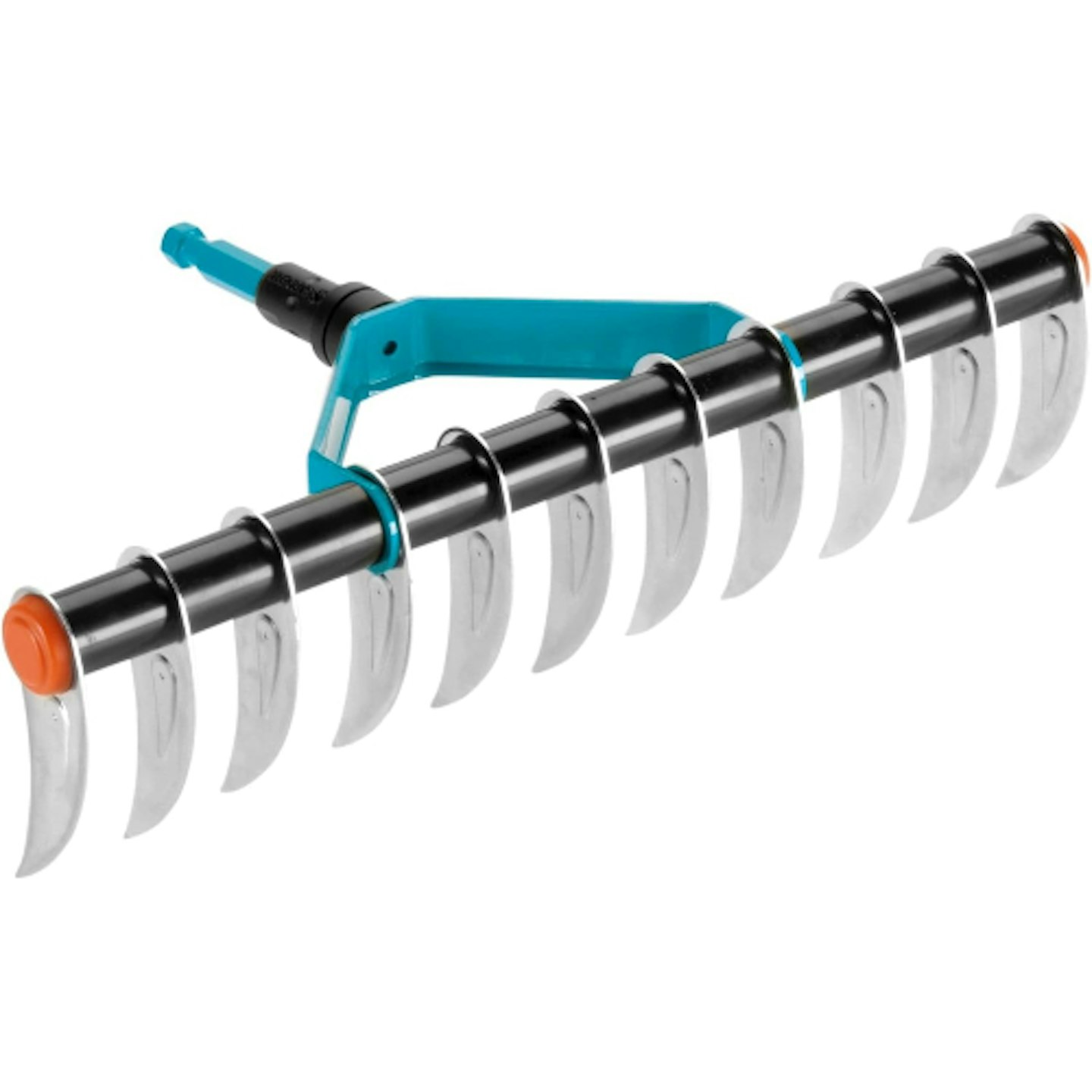 Gardena/Amazon
Gardena/AmazonThis high-quality Gardena garden tool offers two useful functions in one - aerating and raking. It has a 35cm wide rake head that's equipped with 11 very sharp galvanised cutting tines to aerate your lawn.
In addition to the aeration, those sharp, blade-like tines are very effective at removing moss. They can also help to drag out thatch - the layer of dead grass that sits between your healthy grass and the earth that can result in a spongy-feeling lawn.
This forms part of Gardena's Combisystem which sees various tool heads from the manufacturer fitting the same handles. This is great if you've already bought into the range. There various designs of handles available, including wood and aluminium handles, telescopic handles, and Gardena's ergonomic "ErgoLine" handles.
Pros
- 11 very sharp galvanised cutting tines to aerate your lawn
- Especially effective at removing moss and thatch
Cons
- You need to buy the Combisystem handle separately
Best cultivator aerator
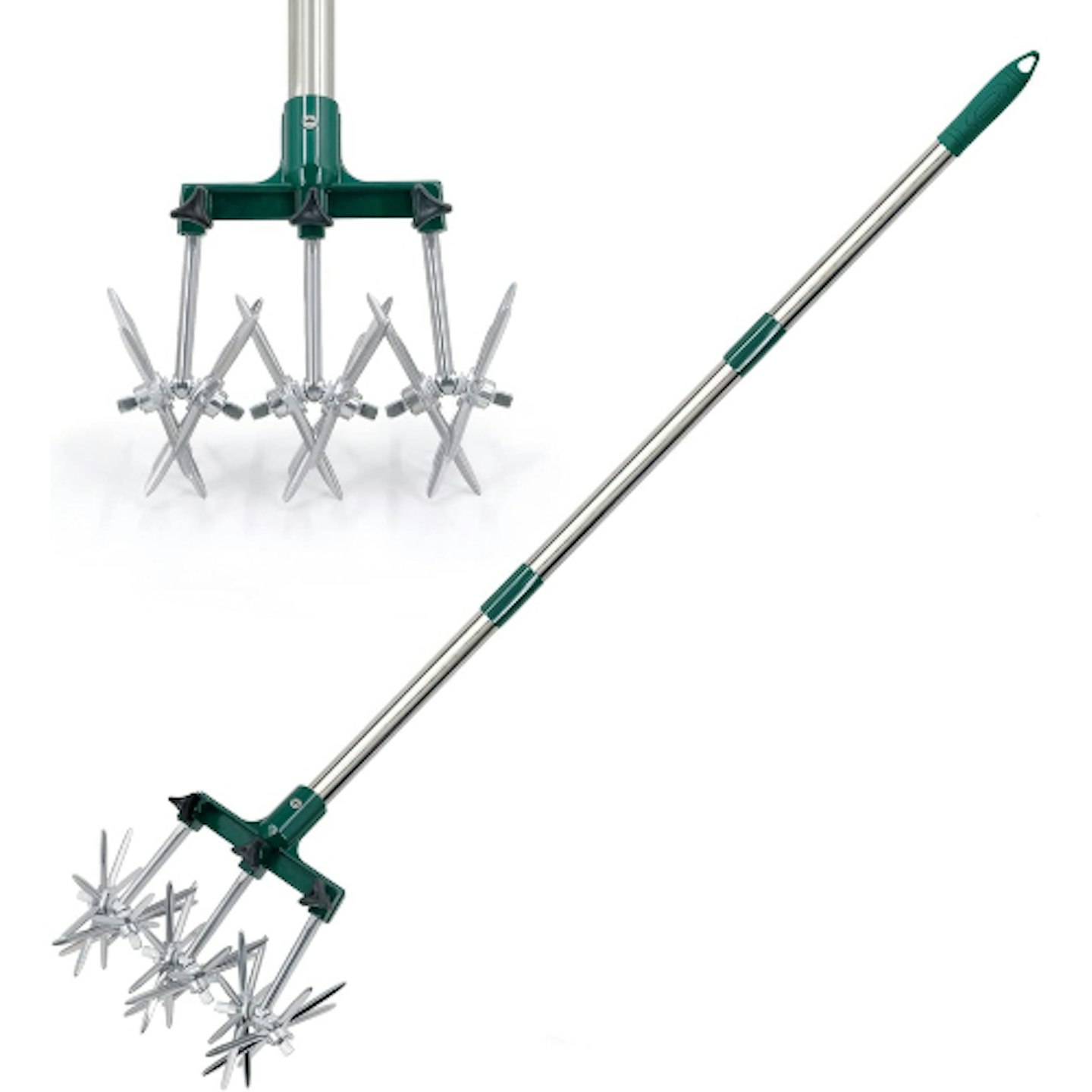 Hortem/Amazon
Hortem/AmazonTechnically, a cultivator is an entirely separate tool from an aerator, designed to break up and mix soil, but more heavy-duty options can also be used to aerate. We've included this as it could be a good option for someone with a smaller lawn who doesn't have the space - or maybe budget - for two separate tools.
The head of this cultivator is made of high-hardness stainless steel and it offers polished cast-aluminium blades. The blades measure around 4cm and can be detached as required to manoeuvre around plants, although for a lawn you're probably going to want to use the full set.
This rotary aerator has a telescopic handle that can be adjusted from 58 to 160cm, good for your back as you can make it the perfect length for you. This comes complete with free rubber-palmed gardening gloves so you can handle it safely and securely.
Pros
- Removeable polished cast-aluminium blades
- Telescopic handle with a rubber grip for comfortable use
Cons
- This cultivator's tines aren't as long as some aerator's
How we chose the best lawn aerators
All of these lawn aerators have been hand-selected by our team of Modern Gardens shopping experts. We carefully considered the design, functionality, and usability in our selection of the best. Our team has spent hours investigating and researching lawn aerators to make it easier for you to find the very best, and we'd never recommend a product we don't believe in.
Where possible, we also test and share the latest and best products you should know about. And with help from Modern Gardens Magazine, Garden News and Garden Answers, we share expert gardening knowledge to help you get the most from your product.
FAQs
Is solid tine or hollow tine best?
Solid tine aerators are recommended for use as part of general, domestic garden maintenance. If your lawn is in pretty good condition, a twice-yearly aeration should be enough to keep it looking tip-top.
Solid tines only make very thin holes in lawns, pushing the grass roots to the side. These kinds of holes will soon close up, especially if the lawn is walked on often. If you want to make more substantial holes, a hollow tine corer aerator takes small plugs of turf out completely, allowing for some serious root spreading.
While overkill for most garden lawns, hollow tine aerators are great for use when the ground is water-logged, compressed, or has been compacted.
What time of year should I aerate my lawn?
The traditional times of year to undertake lawn aeration is spring and autumn. Spring, to 'wake' your grass up after it has led dormant in the colder months, and autumn, to give it some essential maintenance before the winter comes.
Aeration is always more successful, and less hard work, if the ground is damp or even wet, so these times of year are usually typically just that. Whenever you do it, ensure to mow your lawn first for a more effective result.
What should I do after I aerate my lawn?
If you want to give your grass a thorough beauty treatment, after you aerate you can use a scarifier to remove any moss or thatch. If you dodge this stage, an aerated lawn is ripe for a sprinkle of grass seed, that will have more luck growing as it falls into the small holes you've created.
For the same reason, it's also an ideal time to apply some nutrient-rich lawn fertiliser to give those roots you've just given growing room to a chance to really flourish.
What to read next:
Subscribe to Modern Gardens magazine and get the most out of your outdoor space. Discover everything you need to know to make your outside space look fantastic, quickly and easily, with hundreds of simple ideas, designer tricks, affordable products and expert advice in every issue of Modern Gardens. View our latest subscription offers to save on shop prices.
Amy-Mae Turner is a Commerce Content Writer for Modern Gardens, Yours, Take A Break Pets, and A Modern Kitchen. When she's not pottering in the garden or mucking around in the kitchen, she can be found having doggy cuddles with her two beloved cockapoochis.
